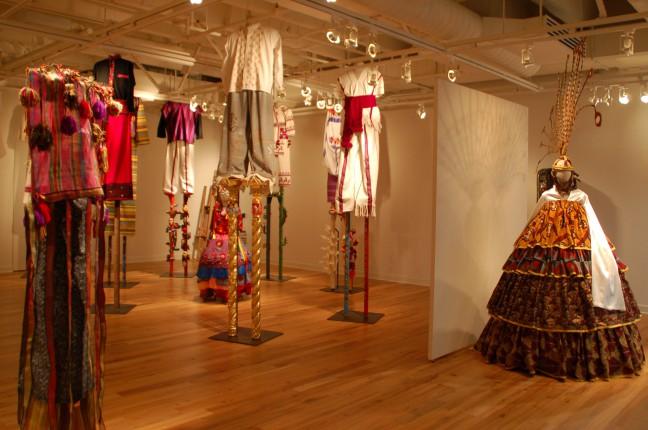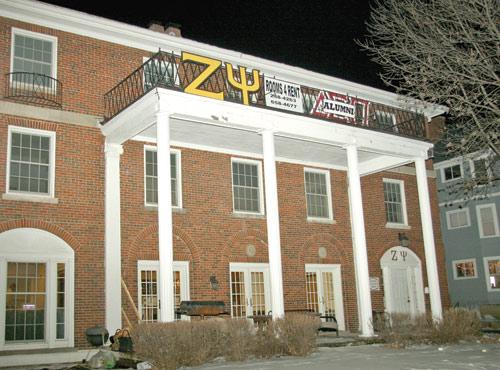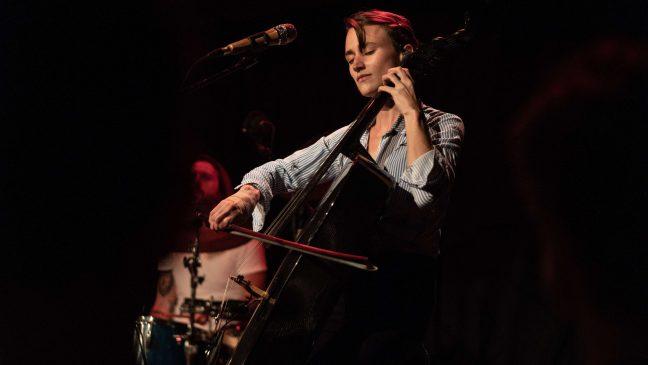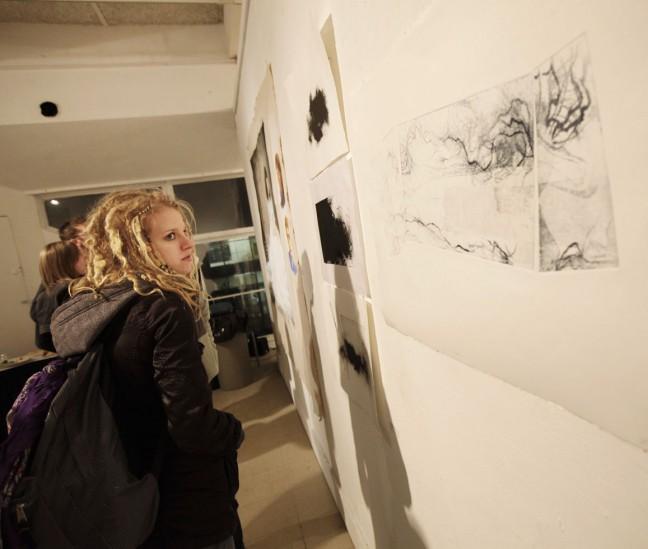Mickey Mouse Degrees is part of a series exploring different majors on campus.
The term “Mickey Mouse Degree” is a pejorative used to describe majors that are not seen as leading to a stable job, lucrative or essential. This attitude affects the support many areas of study receive in terms of funding, or student wellness.
Dimana “Dean” Koleva is a University of Wisconsin senior studying fashion design on the textiles track. She is also studying for certificates in graphic design and entrepreneurship.
This semester, Koleva is taking courses in weaving, papermaking, product development and introduction to music. She is taking three studio classes this semester.
Courses for fashion majors, much like art majors, heavily involve time in the studio. Koleva said after introductory and theory courses, all of her classes were studio classes, which combined elements of theory, history and learning physical skills for her craft.
Grammy-nominated artist Phoebe Bridgers takes on Madison in grand outdoor show
“We usually get together … and discuss politics, economics, socioeconomics around textiles and trends … and then we get an assignment … integrating different techniques and such.”
Koleva said her free time outside of classes is “basically all spent in a studio somewhere.” Her homework and test grades are based on critiques by classmates and professors, creating a system of accountability if work is not completed.
“When you’re creating something, you can’t do the bare minimum, because the bare minimum would be an unfinished garment or unfinished yardage so it’s gonna be obvious that you haven’t finished it … it’s different than having a professor writing you like a B on your paper,” Koleva said.
Koleva reported having projects, such as a jacket or vest, that have taken over 30 hours in a studio to complete.
In addition, Koleva’s projects involve learning a variety of styles and skills in order to design a specific look.
“Something my professors told me the other day is like, ‘Don’t call your projects, projects, call them research,'” Koleva said. “They’re basically research. You have to learn certain techniques, you have to research certain cultures.’”
In addition to coursework that’s time-intensive, involving research, practical application and artistic interpretation, the department requires an internship, interview with an advisor and a graduating thesis in order for students to graduate — setting up students for both a career and for graduate school.
Despite the rigorous nature of this work, Koleva said she is still met with derision.
“Well, there’s a lot of people, like ‘that’s a major?’, which is kind of condescending,” Koleva said.
Madison Night Market offers dose of culture, local businesses in heart of city
In addition, Koleva said she sees a lot of people who assume that fashion design is “arts and crafts” or that “you can kinda do whatever you want.” She added that it’s odd that this happens to a lot of majors in production and arts, especially from other rigorous majors.
Currently, a barrier that affects fashion students is accessibility and financial affordability. Outside of some common equipment such as sewing machines or common thread, students need to buy material for projects and assignments out of pocket.
“Any patterns you have to use, any fabrics you have to use, notches, buttons, everything you have to purchase yourself,” Koleva said. “I had projects that were up to $200 … We work with dangerous chemicals too, like carcinogens … from textile dyes … you have to buy [protective equipment] yourself,” Koleva said.
This can prove challenging for many students. Despite some financial aid from the university for supplies, most students find themselves under financial burden just to complete their assignments.
“I had a friend who was in the fashion program and had to drop out because he couldn’t afford it anymore,” Koleva said. “So he doesn’t go to the UW anymore because of that.”
Koleva said UW could be more inclusive when it comes to representing art programs in their job fairs.
“There’s the stem one, the business one and the general one, but the general one barely has opportunities for fashion students … they mostly see the consumer science side.”
Koleva also said promoting fashion design around the school would help more people know about the department and explore it.
Trombone Shorty, Orleans Avenue bring a taste of Louisiana to Madison
Koleva cites a major motivating factor for her studies is the community found within the fashion design department. She described the environment as very communal and community-based.
“The students always help each other because they are in the studios until three in the morning with a bunch of other people — there’s no way you’re not gonna bond at some point,” Koleva said.
Koleva also described the faculty as very approachable and supportive.
In addition, there’s always the satisfaction of completing a project.
“Seeing your complete things makes you very happy,” Koleva said.

















